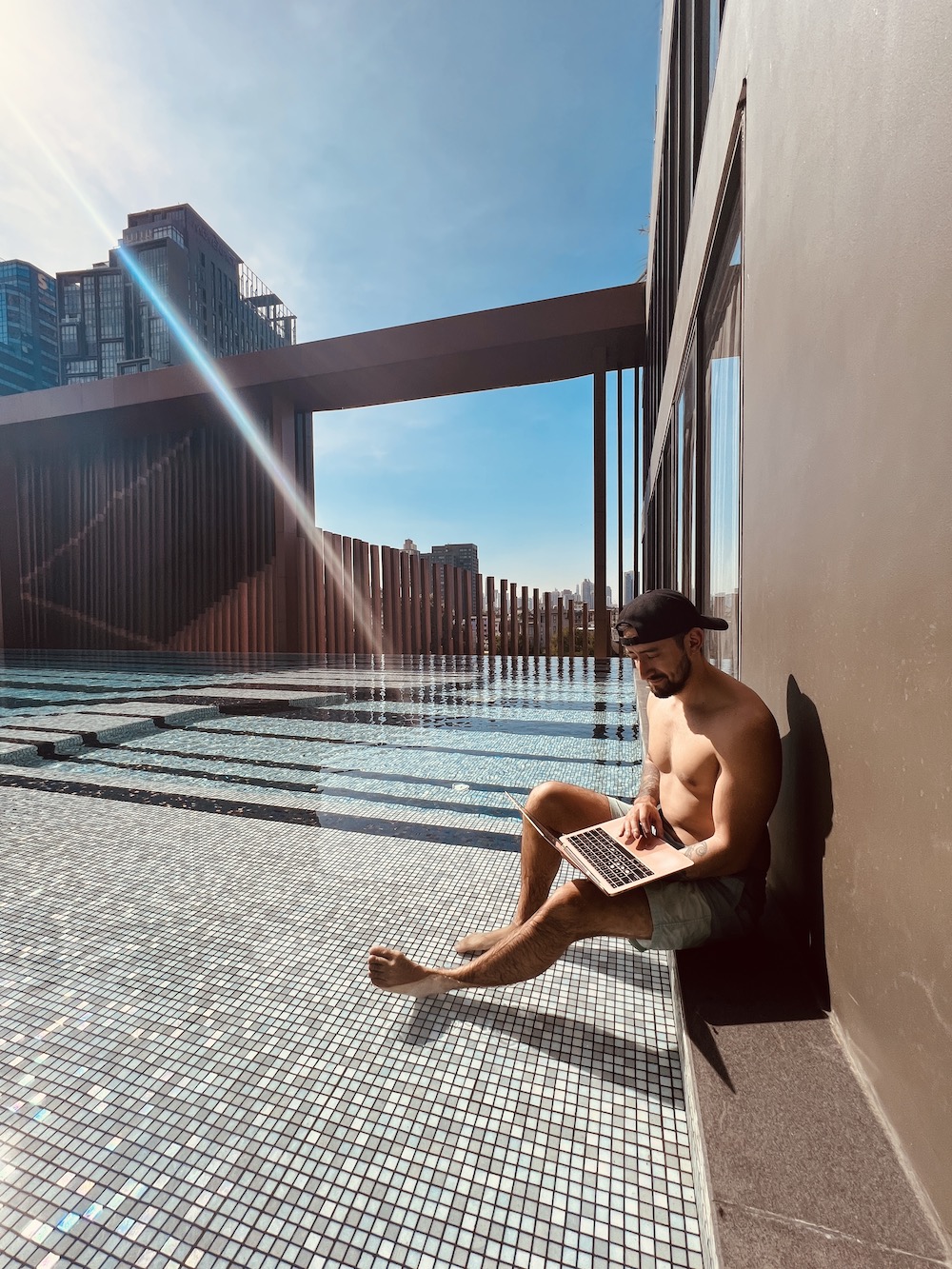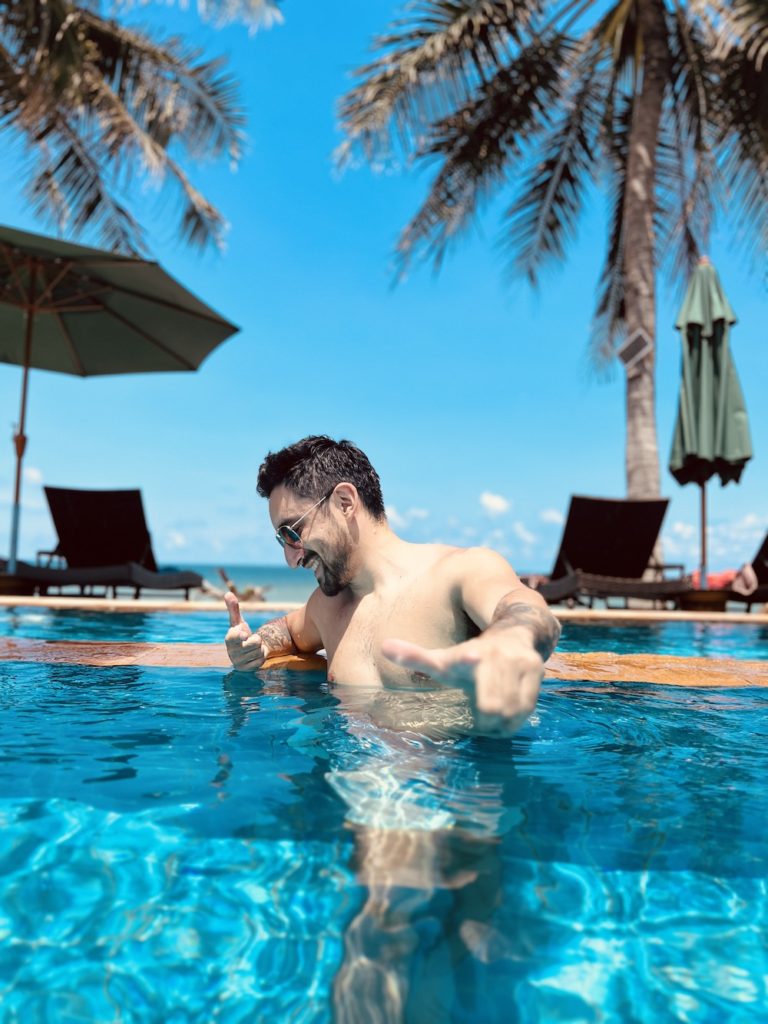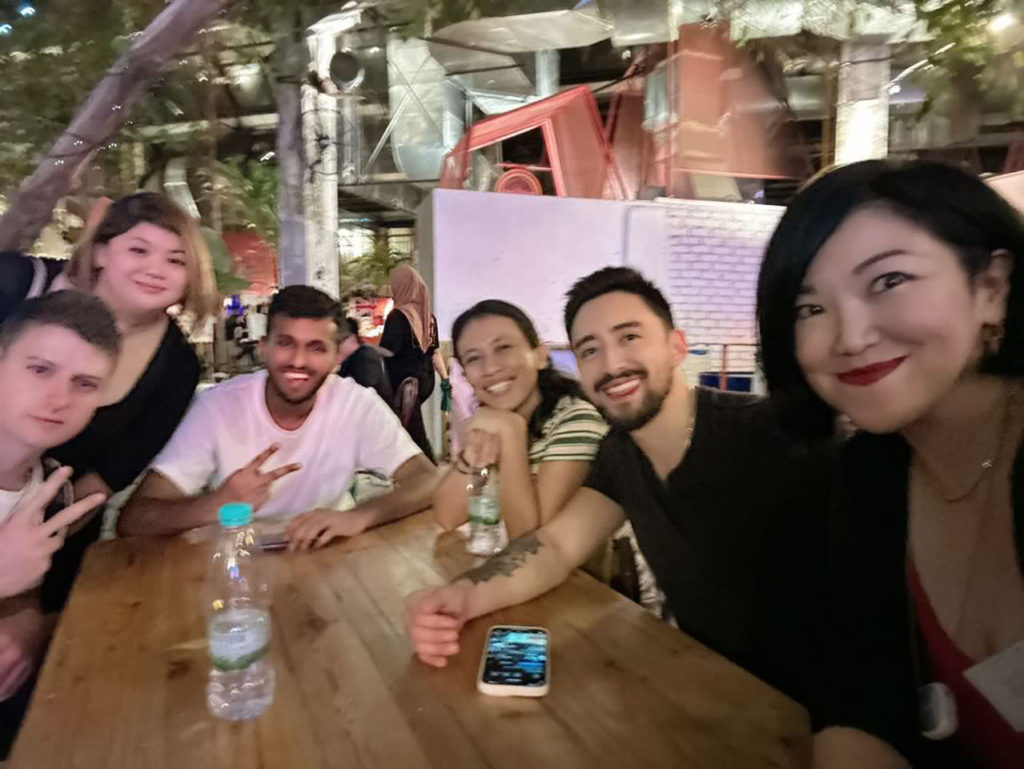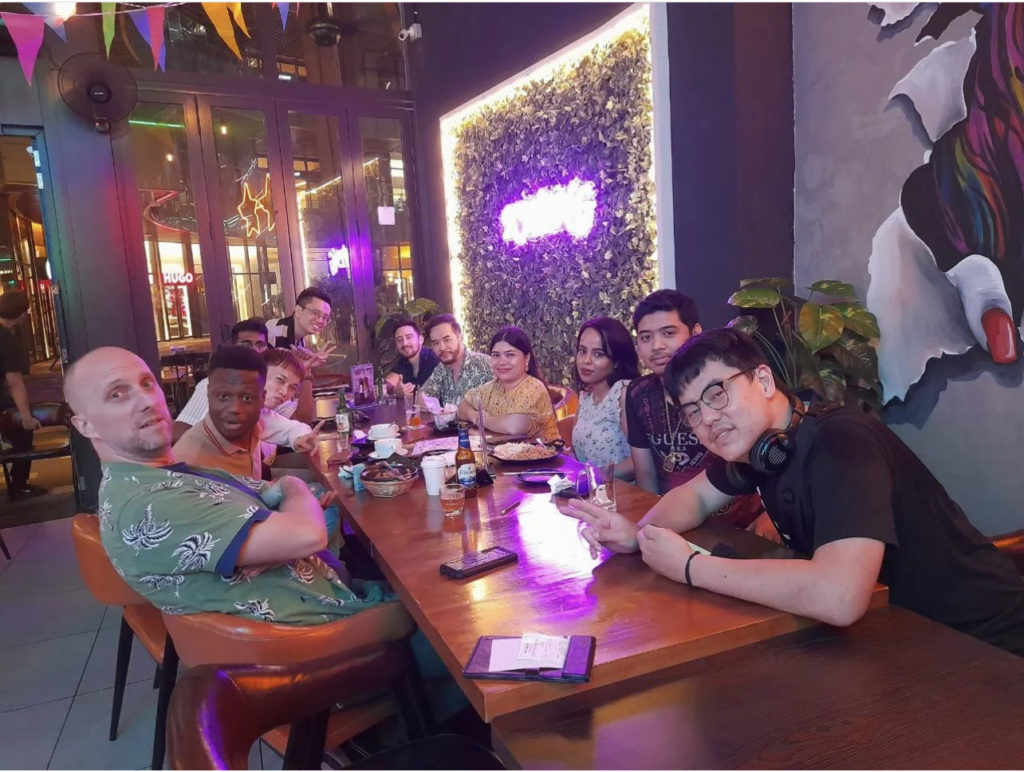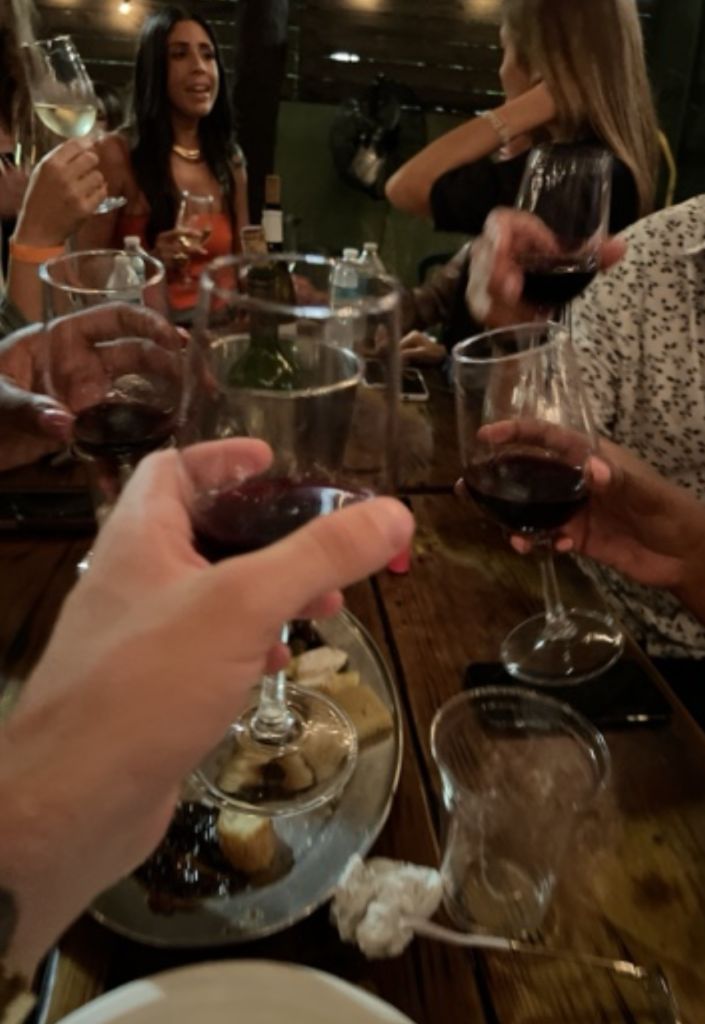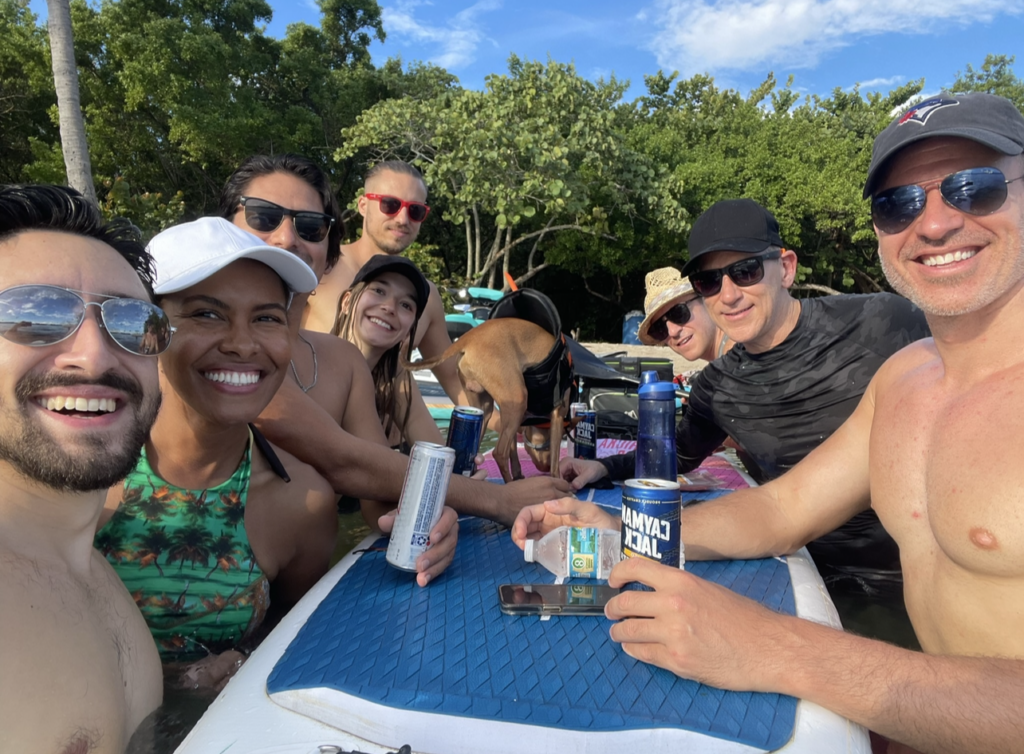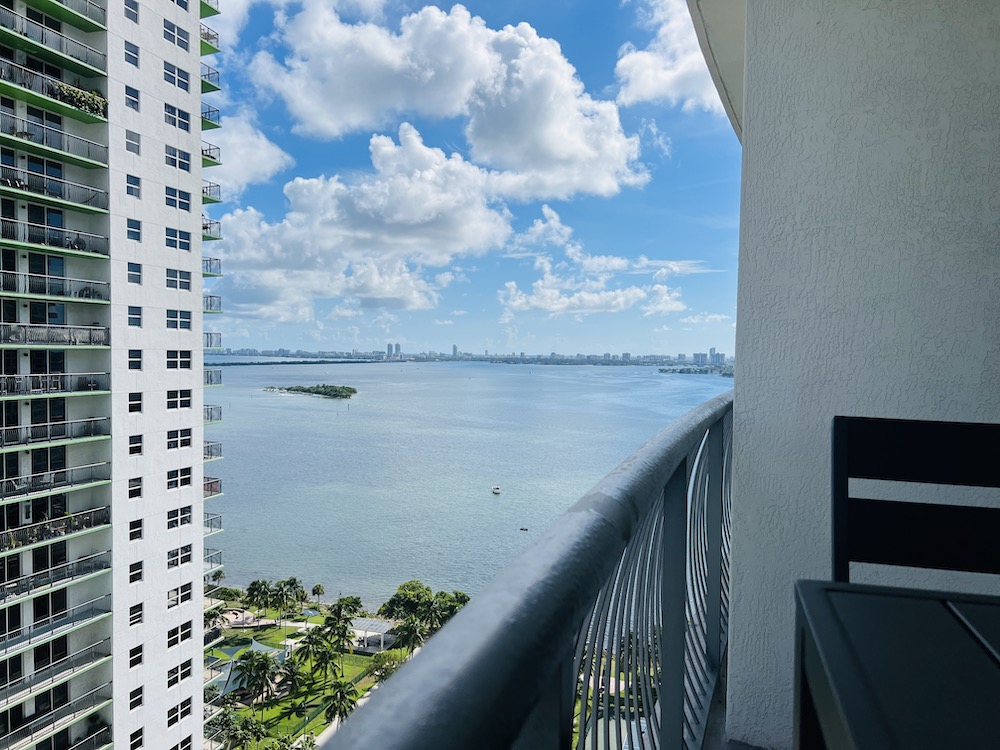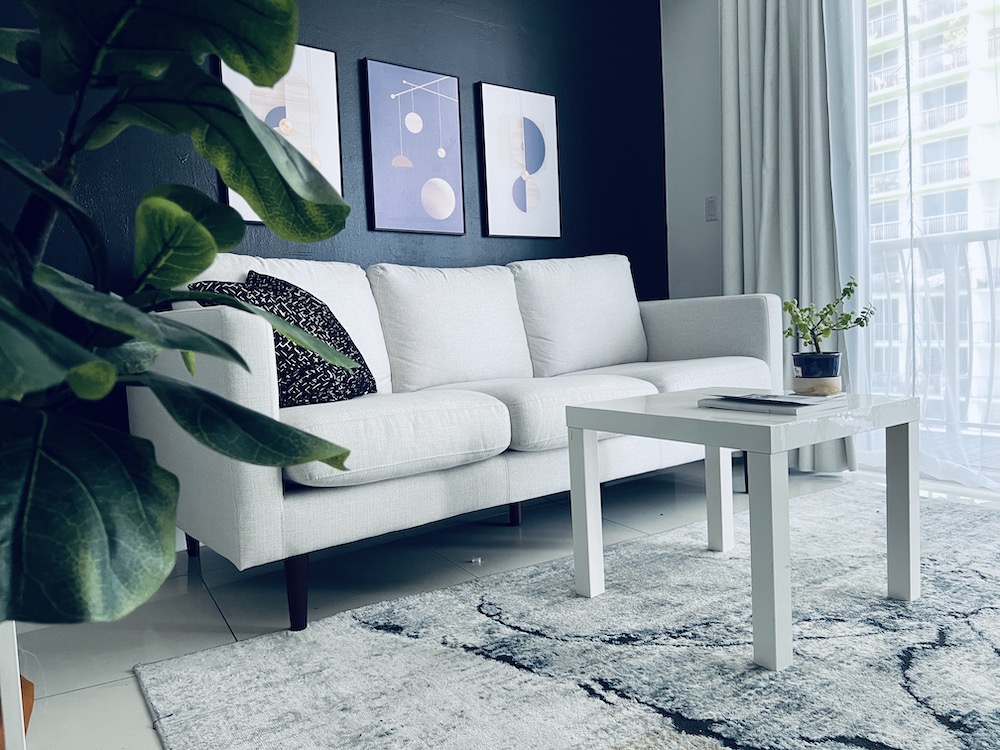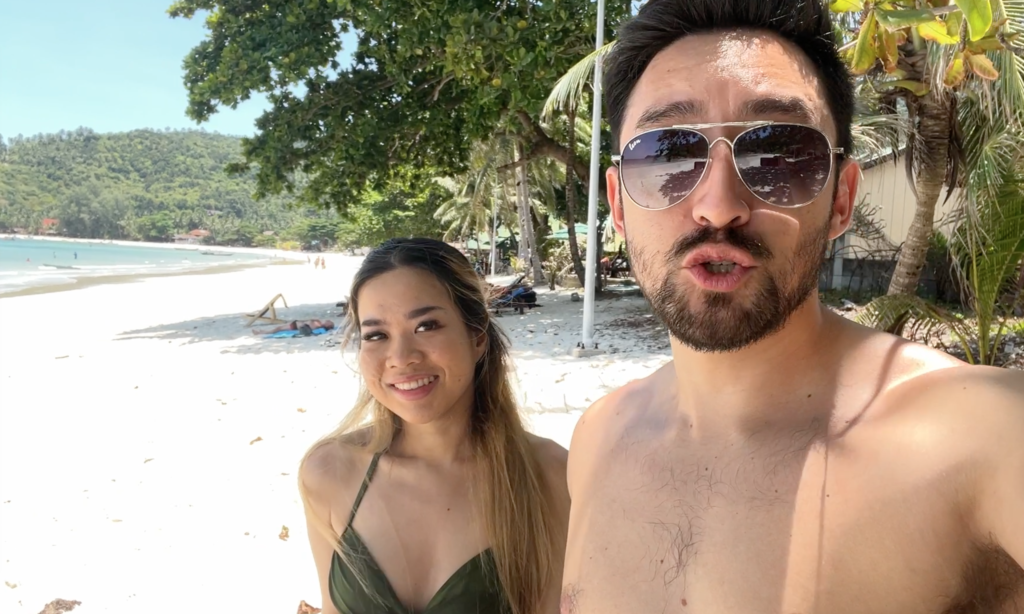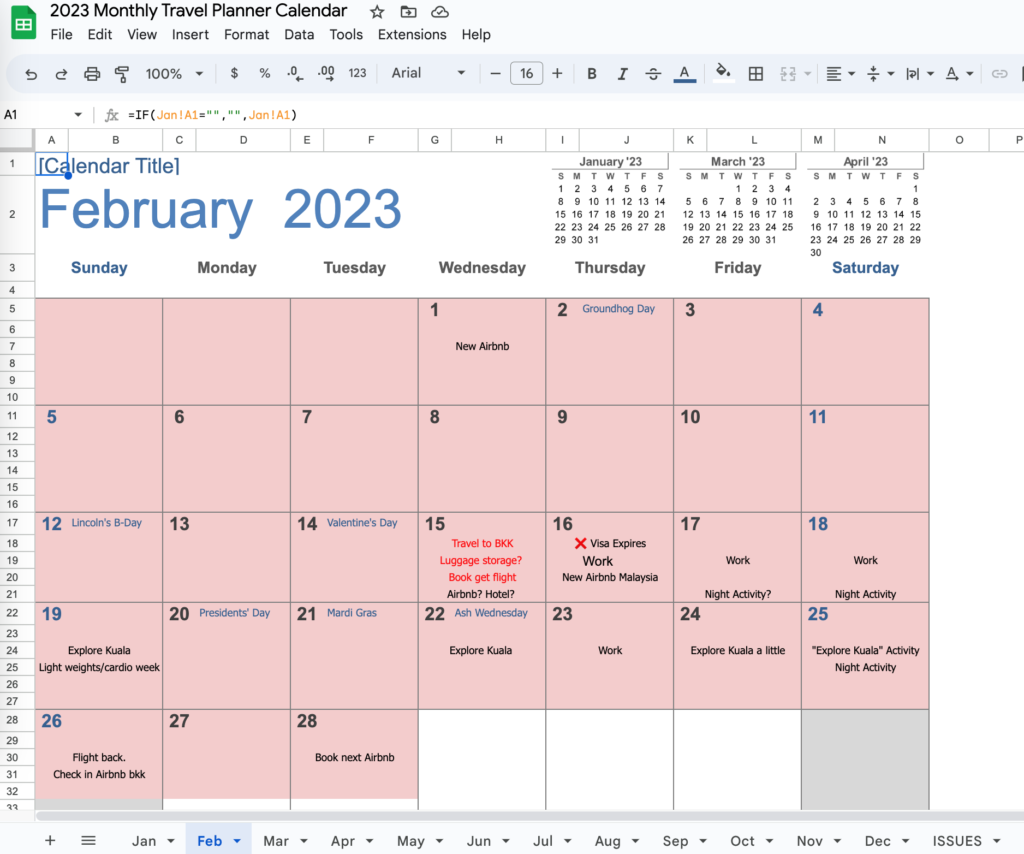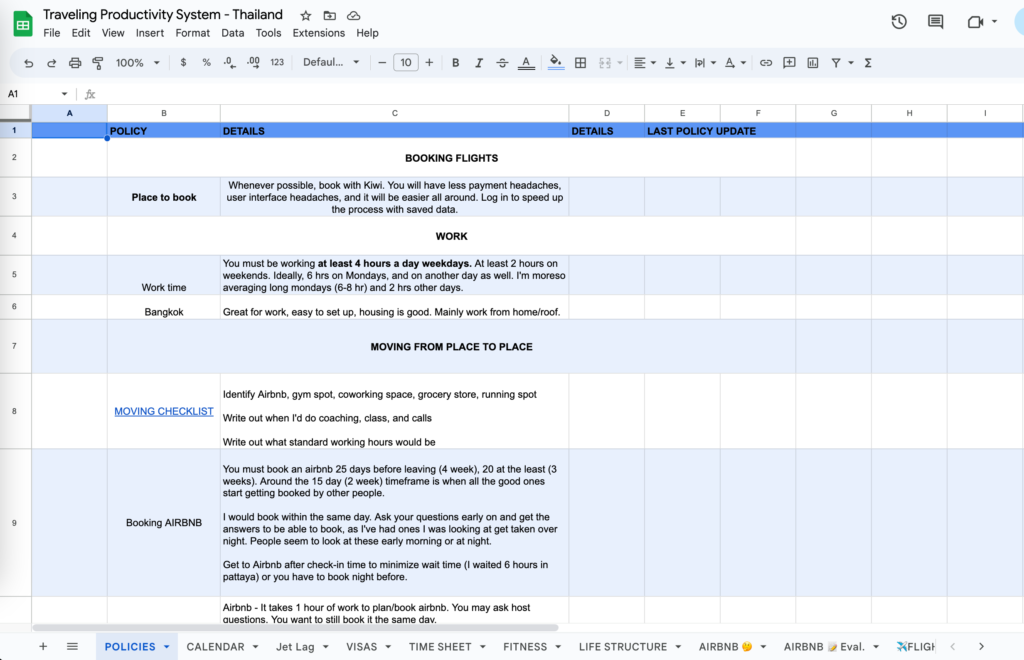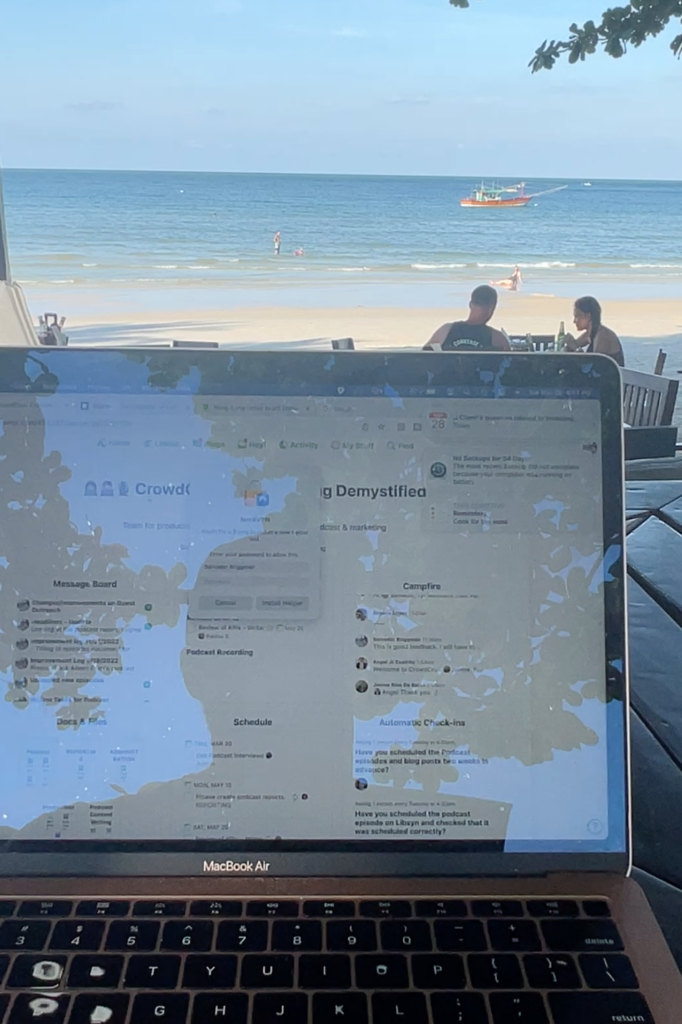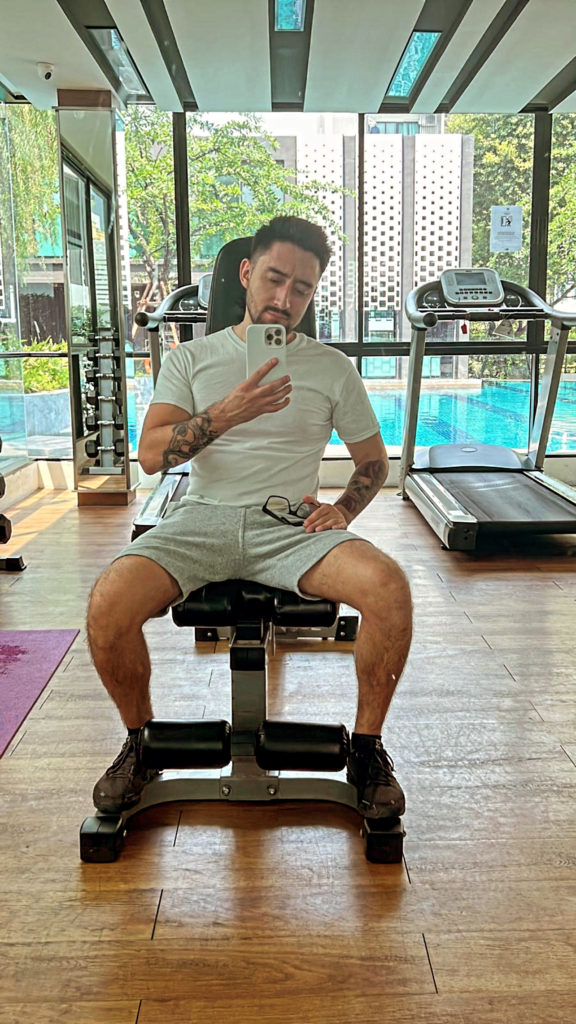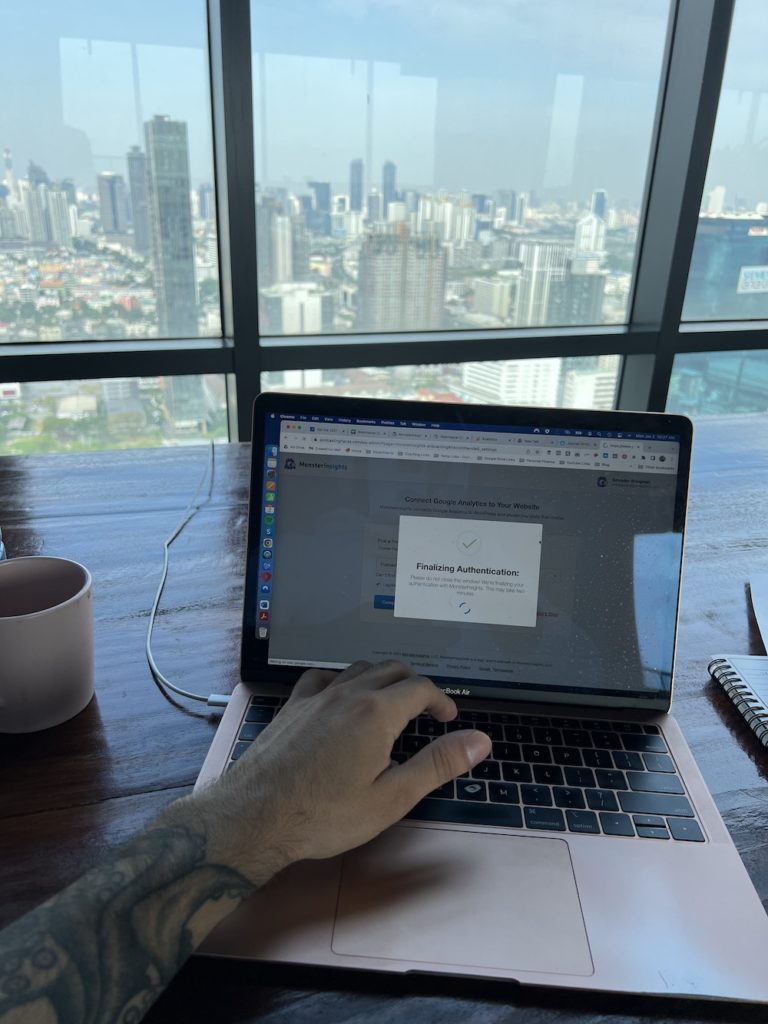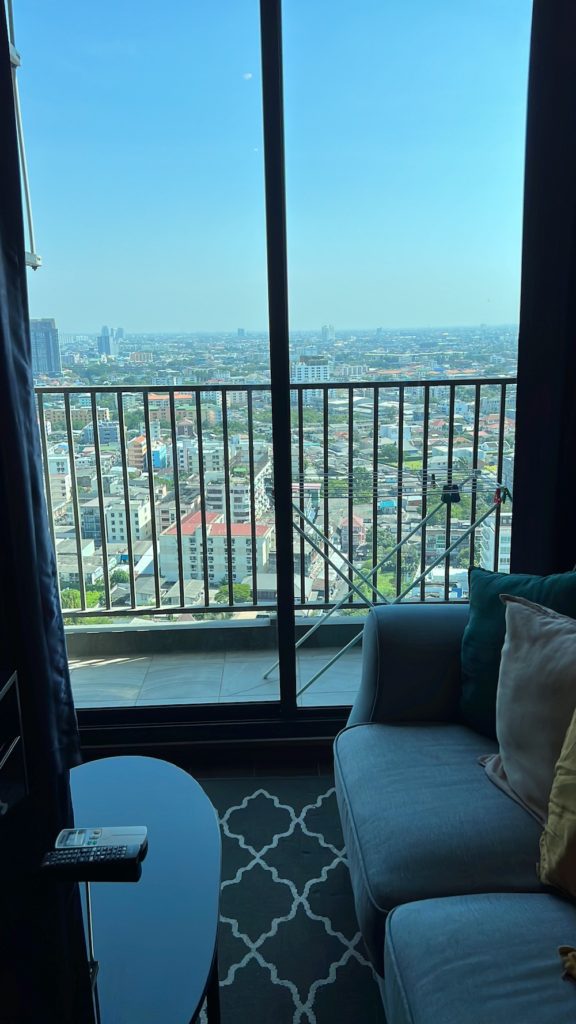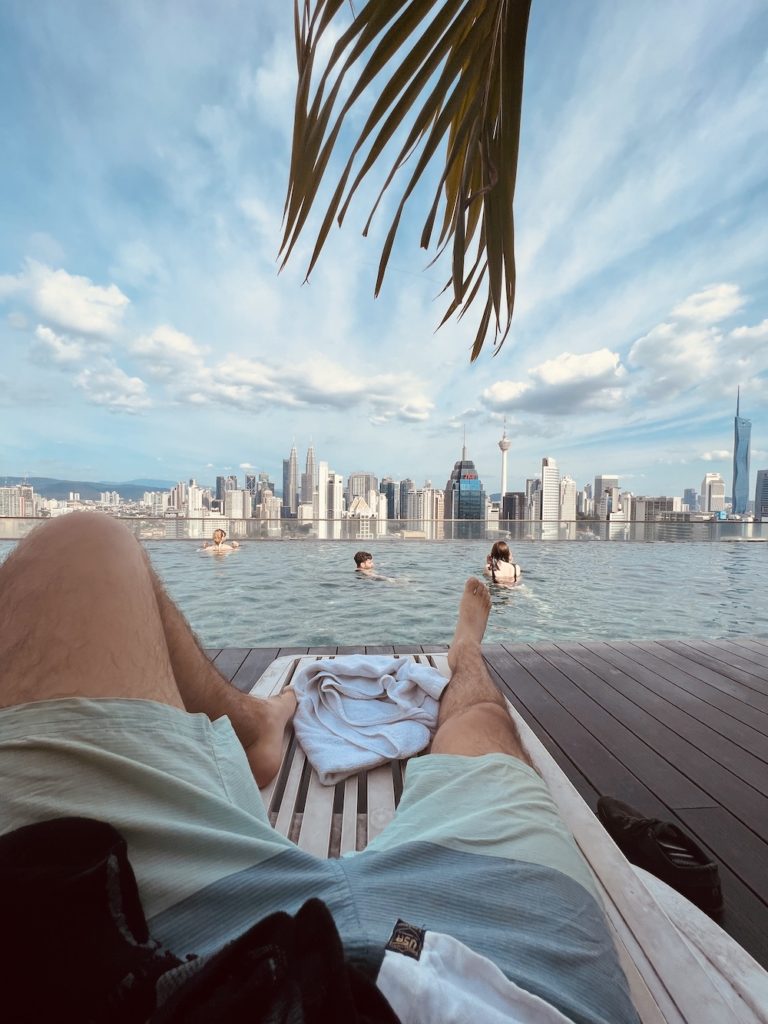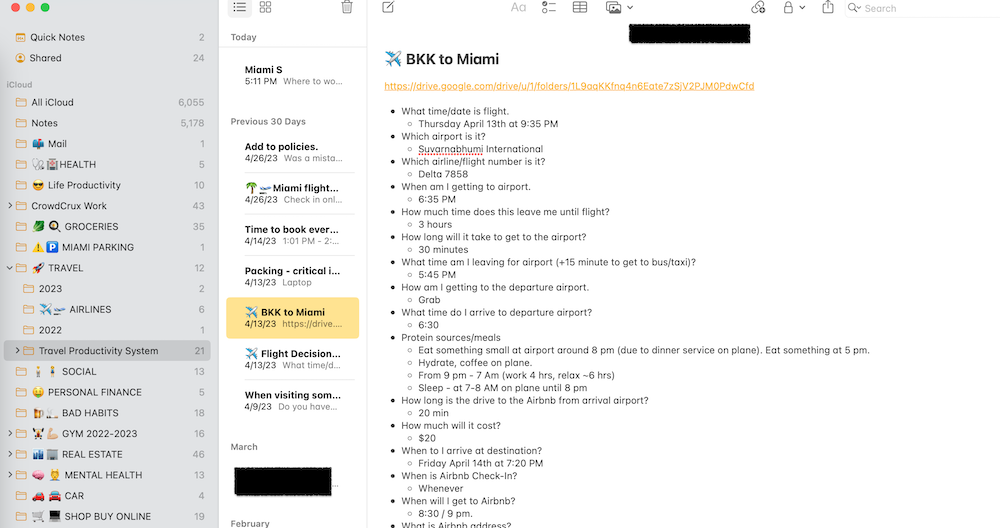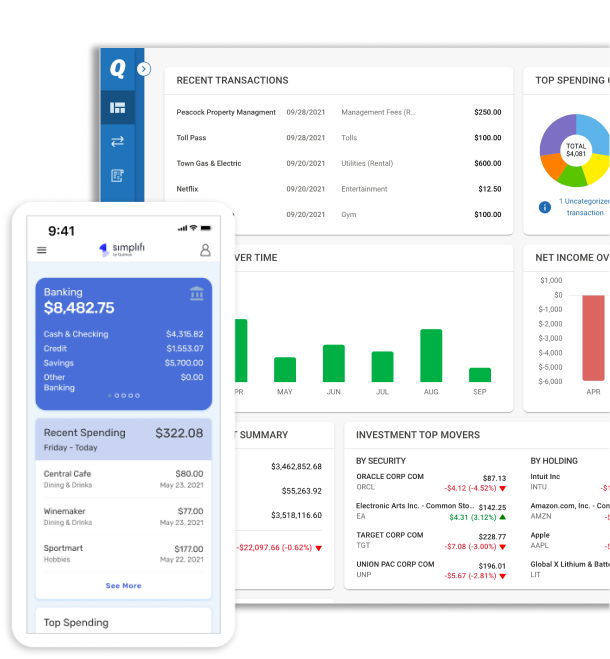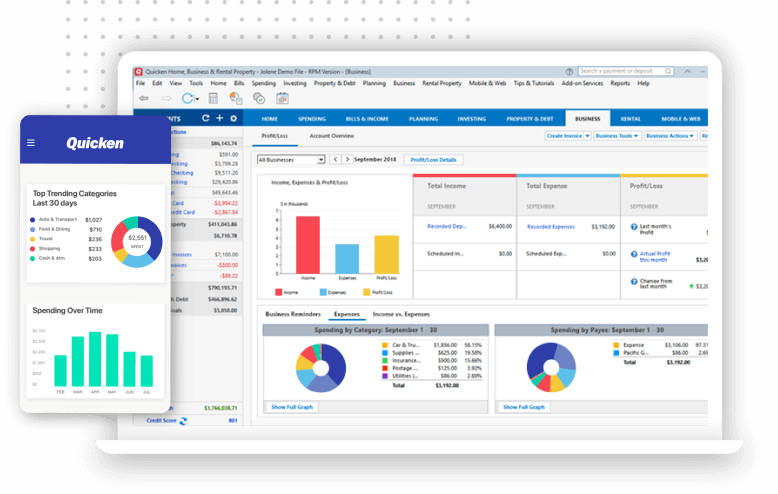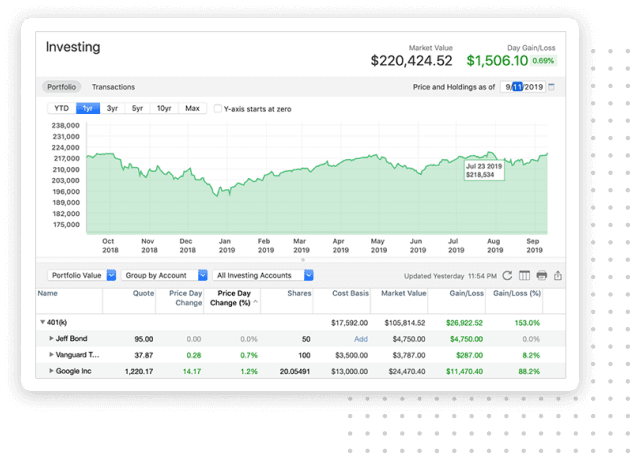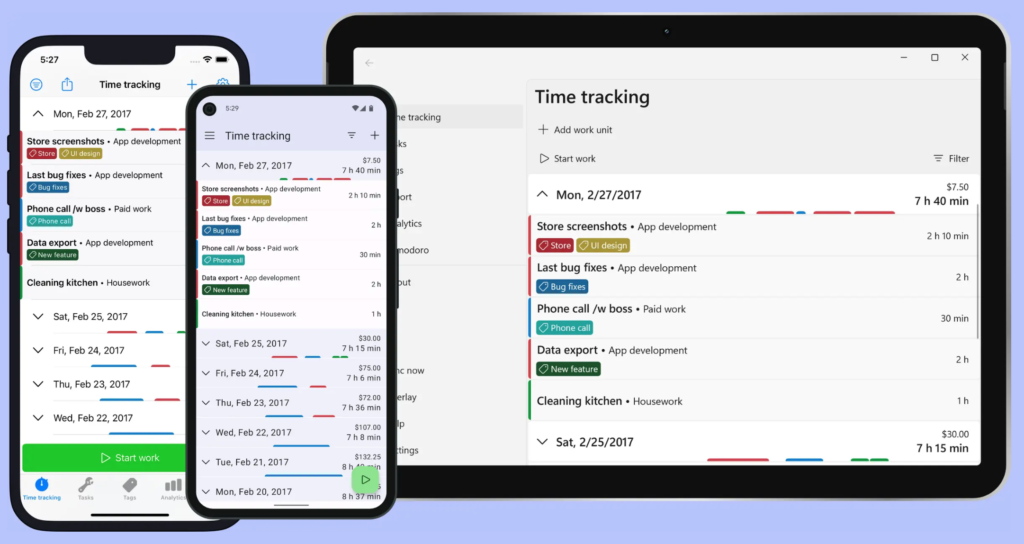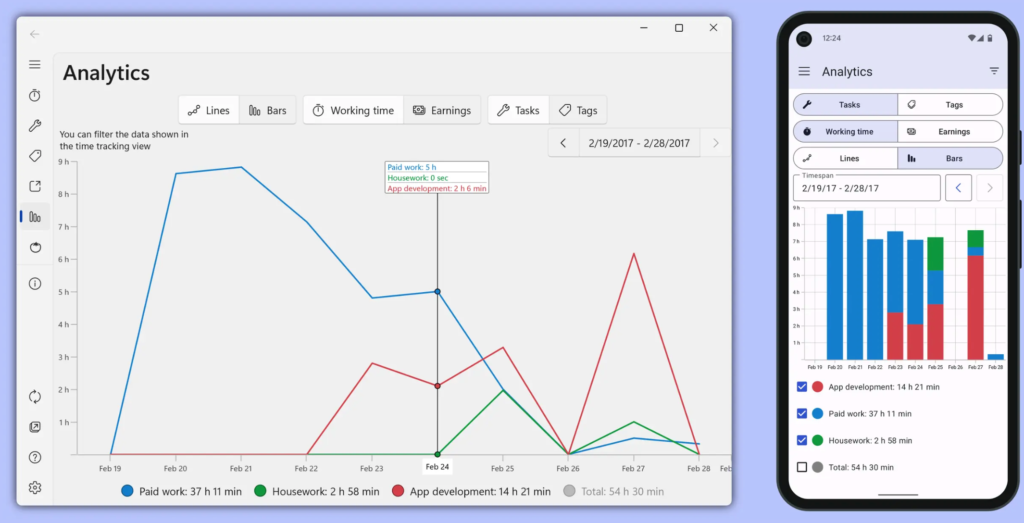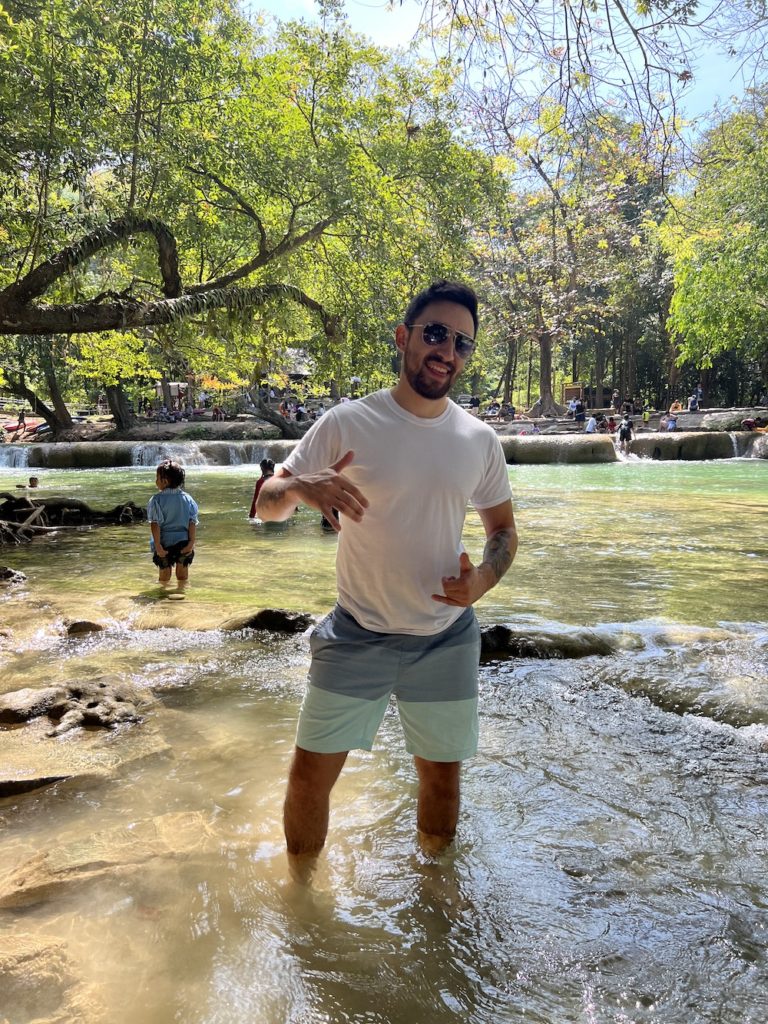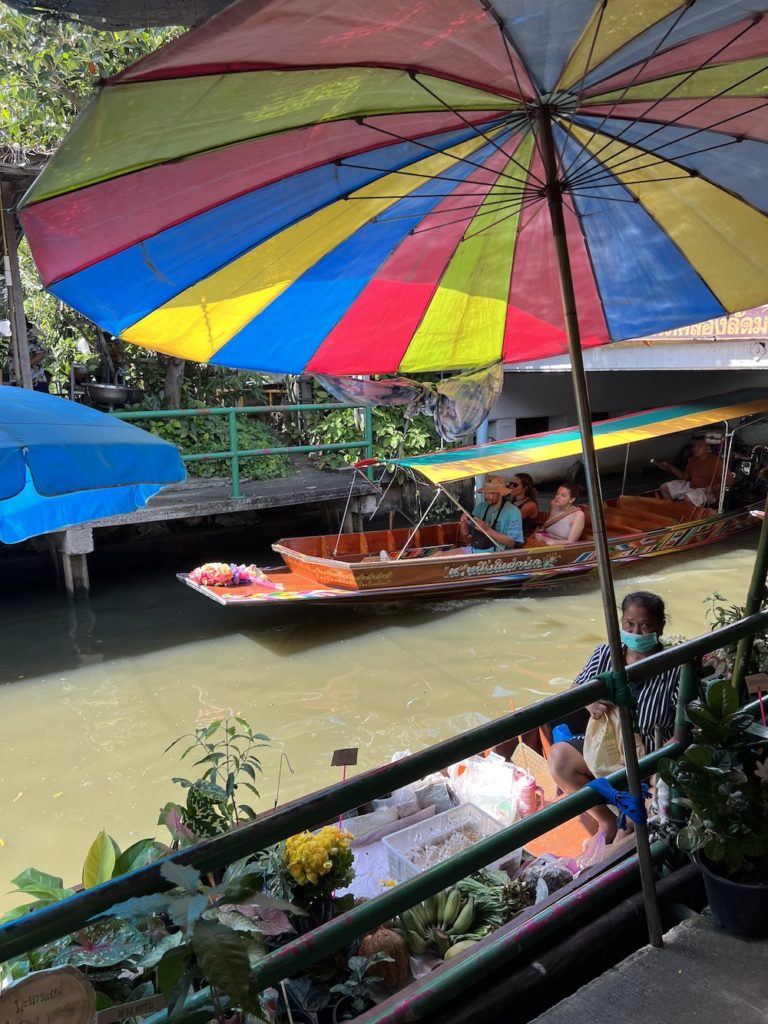There’s so much great advice out there about how to be a digital nomad.
I love seeing members of the community share their story and their challenges.
I wrote this article to share some of the discoveries I’ve stumbled upon when it comes to making the transition to the digital nomad lifestyle much easier.
In 2015, I traveled for the first time alone outside of the United States to Thailand. I was running a profitable blog, which bankrolled my travels. I had the time of my life!
Ever since then, I’ve become obsessed with living the location-independent life. I’ve also grown my skills and went from blogging, to writing books, to hosting my own podcast, and finally to launching a profitable YouTube channel.
I’ve lived in many of the digital nomad hotspots including Colombia, Thailand, Spain, the Philippines, and like many, have traveled around the world to other cool destinations like Peru, Guatemala, El Salvador, Cuba, Cambodia, China, Malaysia, and many more.
Living the life of a digital nomad, traveling the world while working remotely, is a dream for many. However, the lifestyle requires a lot of preparation and organization to make it sustainable. From creating a travel system to managing finances and health, here are 21 tips to help you live your best digital nomad life.
Even if you’re not a programmer or technically-minded person, you can become a digital nomad. After all, I’m definitely not (and I suck with technology).
Even if you don’t have a location-independent job, you can hop on the freelancing bandwagon and become a highly-paid digital nomad.
1. Write Down Your Current Schedule
Before embarking on your digital nomad journey, write down your current work schedule and analyze it to see where you can fit in travel. This will help you create a plan that allows you to work and explore the world at the same time.
Writing down your current schedule before traveling can help you maintain key habits and routines that are important for your physical and mental well-being. When you’re traveling, it’s easy to get caught up in new experiences and neglect your usual routines, like exercise, healthy eating, or getting enough sleep.
You would document each day in your current location. A M-F schedule can be as simple as:
7:30 am – Wake up, get dressed, and have breakfast
8:30 am – Commute to work/school
9:00 am – Start work/school
12:00 pm – Lunch break
1:00 pm – Resume work/school
3:00 pm – Head to the gym for workout session
4:30 pm – Finish gym session, take a shower
5:30 pm – Run errands or socialize
7:00 pm – Dinner/Work More
8:00 pm – Work a bit
9:00 pm – Relax
10:00 pm – Get ready for bed
10:30 pm – Lights out
By documenting your current schedule, you can make sure you carve out time for your essential habits and plan your activities around them. This can help you stay energized, focused, and motivated, even while you’re exploring new places.
It will also allow you to plan out your weekend schedule, and which days you enjoy doing fun activities throughout the week, like checking out cool temples.
Having a clear schedule can also help you avoid overbooking or underutilizing your time, leading to a more fulfilling travel experience. It is also important if you have a job that requires you to clock in.
2. Develop a 3rd Home
As a digital nomad, you may not have a permanent home. I recommend that you develop a third home, such as a co-working space or a local café, where you can work and feel comfortable.
I’ve learned that having a place I regularly visit is crucial for my mental health and social life. When I’m constantly on the move, it can be challenging to build relationships and feel a sense of belonging. That’s why I make it a point to find a coffee shop or co-working space in each place I visit where I can get to know the locals and other travelers.
By having a go-to spot, I develop a habit of going out to socialize, which helps me combat the isolation that can come with working remotely. Plus, feeling comfortable in a familiar environment makes traveling feel a little more like home.
If you want to explore even more, you can dive deep into your hobbies. You can regularly engage in these activities and invite other people that you meet along with you. Here are a few simple examples:
- Photography: Whether you’re exploring a new city or hiking in the mountains, photography is a great way to capture and share your experiences.
- Writing: Keeping a travel journal or blog is a popular hobby for many travelers. It allows you to document your adventures and share your thoughts and experiences with others.
- Learning languages: Immersing yourself in a new culture is a great opportunity to learn a new language. You can take classes, or even just practice with locals.
- Cooking: Exploring local cuisine is a great way to experience a new culture. You can take cooking classes, learn new recipes, and even experiment with new ingredients and cooking techniques and cook for your new friends.
- Yoga and meditation: Travel can be stressful, so practicing yoga and meditation can help you relax and stay centered. You can find yoga studios or meditation centers in many destinations around the world.
- Adventure sports: If you’re an adrenaline junkie, there are plenty of adventure sports to try while traveling, like bungee jumping, skydiving, surfing, and more.
- Music: Whether you’re a musician or just a music lover, attending concerts and festivals or even just jamming with locals is a great way to connect with people and experience local culture.
3. Pursue Social Events
One of the great joys of travel is the opportunity to meet new people and experience new cultures. However, for some travelers, the prospect of being in an unfamiliar environment can be intimidating. This is why it’s important to pursue social events while traveling.
Social events can take many forms, from attending a local festival to joining a group tour to participating in a language exchange. The key is to find something that interests you and that will allow you to connect with locals and other travelers.
One great way to find social events is to use online resources such as Meetup.com or Facebook groups. These platforms allow you to connect with like-minded people in your destination and to find events and activities that match your interests.
Another option is to stay at hostels or other shared accommodations, which are designed to encourage socializing. Many hostels offer group activities and events, such as pub crawls or walking tours, which can be a great way to meet fellow travelers.
Finally, don’t be afraid to strike up a conversation with locals or fellow travelers when you’re out and about. You never know who you might meet or what interesting experiences you might have.
4. Take Care of Your Primary Residence
If you have a primary residence, like a house or a condo, you are going to want a plan as to what to do with it while you’re traveling. If you’re leaving your home for an extended period, take care of it by getting a house sitter or asking a trusted friend or family member to check on it regularly.
You should:
- Secure your home: Make sure all windows, doors, and entryways are locked and secure. Set up timers for lights or invest in smart home technology to make it appear as if someone is home.
- Manage your bills: Make sure all your bills are paid up to date and set up auto-payments for any bills that come due while you’re away.
- Protect your appliances: Turn off and unplug all electronics and appliances to protect them from power surges. You may also want to consider turning off the main water supply and draining your pipes to prevent any leaks or damage.
- Notify trusted contacts: Let trusted friends, family members, or neighbors know that you’ll be away and ask them to keep an eye on your home. Provide them with a way to contact you in case of an emergency.
- Prepare your home for extreme weather: Depending on the season and location, you may need to prepare your home for extreme weather conditions such as hurricanes or snowstorms. Secure outdoor furniture, cover windows, and consider installing storm shutters or reinforcing your roof.
Personally, I have a condo in Miami, Florida, and I Airbnb it when I travel using a management company. This was my first time getting involved with Airbnb, it’s a great experience for me. I’ve been able to earn income while I travel, and also cover my mortgage!
The management company ensures the property is functioning and getting new Airbnb bookings while I travel. I’d be lying if I didn’t admit that setting up an Airbnb, and a new business in general, does take some time and effort, but you’ll experience dividends years into the future.
I still can’t believe that I was able to successfully Airbnb my home, and that I can return to it whenever I am done traveling. It feels like I’m living a dream.
This is one of my multiple income sources that supports my digital nomad travels.
5. Study Visas to Pinpoint Ideal Stay Locations
As someone who loves to travel, I’ve learned that researching visa requirements is a critical step in trip planning. Before visiting any foreign country, it’s essential to check the visa requirements for your nationality.
There are two ways to go about this process. One is to pick the countries you want to visit and work backwards to figure out their visa requirements. This is how you might get started if you are beginning digital nomad, as you probably wanna explore the world!
The second way is to decide the level of hassle that you want to experience with visa stays and the general region of the world that you’d like to live in. For example, if you want to live in Southeast Asia, you could start by seeing which countries have the longest visa durations so that you can spend less time traveling and can spend more time settled in one place. There are even countries that have digital nomad visas.
For example, in Kuala Lumpur, you can stay up to 90 days on a tourist visa as an American citizen. I learned that when I was out there, taking a break from Thailand!

Firstly, I usually start by visiting the official government website of the country I plan to visit. Most countries have a dedicated page that outlines the visa requirements and application process. This information includes the visa type, duration, fees, and required documentation.
I then record this information into my Digital Nomad Travel System so that I have it handy and don’t need to hunt it down in the future.
This will help you to also plan out your necessary travels to stay compliant with visa requirements. For example, let’s say you wanted to stay in a digital nomad hotspot like Thailand. if you are visiting a country like Thailand on a tourist visa that you get upon arrival, you can only stay for a maximum of 30 days, with a 30-day extension.

You’d then need to travel to another country for a period of time before you came back to Thailand. Having all of the visa requirements handy in your travel system makes this planning process much easier.
A final critical factor to consider is the processing time for visa applications. Some countries offer a visa-on-arrival or e-visa option, while others require an online form to be submitted, or in-person appointment at a consulate or embassy.
6. Expand Your Dating Perspective
While travel is primarily about exploring new places and experiencing new cultures, it can also be an opportunity to meet new people and have unique dating experiences. The experience of dating someone from a different country can offer a new perspective and insight into their culture, customs, and way of life.
It can also challenge your own preconceptions and biases, helping you to grow and expand your worldview. Of course, be 100% honest in all situations and transparent regarding the time you will be in the country.
Getting dating experiences around the world can also provide an opportunity to learn and practice new languages. Engaging in conversations with locals and trying to understand and communicate in their native tongue can be a fun and rewarding experience, as well as a chance to improve your language skills.
Moreover, dating while traveling can be a way to make connections and build relationships that last beyond your trip. While some may argue that such relationships are doomed to fail, they can also be meaningful and fulfilling, and can even lead to long-term partnerships or friendships.
7. Create a Digital Nomad Travel System
Every digital nomad needs a reliable travel system to make the most out of their epic journey around the world. This system should help you research travel destinations, book flights and accommodations, and pack smart.
It will help you with record keeping and serve as a valuable tool. I recommend using Google Sheets or a similar tool as the format for this system which will continue to improve as you travel.
I learned about how to create systems, processes, checklists, and workflows when I was setting up my first online business.
I highly recommend setting up a lifestyle business that generates passive income if you intend to make travel a consistent part of your lifestyle. Here are a few business ideas to get you started.
At the very least, this system should have:
- Policies
- Flight booking form
- Calendar/planner
- Daily life structure
- Visas (and cities)
- Travel Tasks
If you don’t want to use Google Sheets, like I do, you can also use other productivity applications like Trello, Asana, or Basecamp.
This level of organization will make the life that comes with being a digital nomad much easier. You can discover more about my system in my book, the Digital Nomad Blueprint.
I realize for beginners, this might seem like a lot.
So, if you’re just getting started pursuing the digital nomad lifestyle, the easiest action that you can take is to start a blog to begin to catalog your journey and record your findings.
8. Make an Airbnb Checklist
Airbnb is a popular choice for digital nomads when it comes to accommodations.
To make sure you have a comfortable stay, create an Airbnb checklist that includes the amenities you need, such as a strong Wi-Fi connection, a workspace, or maybe a gym.
Not every digital nomad is an entrepreneur or business owner. There are many different types of jobs that digital nomads have.
However, regardless of your work, I would go even further. Take some time to examine the types of amenities that you require to have the optimal life.
A couple of the ones that are a must for me would be:
- Building must have a gym (or be within 15 minutes)
- Ideally, close to a park or outdoor running area
- Desk to work at and chair with a back
- Must be 20 minutes from public transit
- Must have a kitchen with a stovetop
- Must have a microwave
- Ideally, has a washer in the unit
When traveling, staying in an Airbnb can be a great alternative to traditional hotels. However, unlike hotels, each Airbnb rental is unique and comes with its own set of quirks and idiosyncrasies.
That’s why having an Airbnb checklist is so important. If you plan on staying in hostels our other accommodations, I recommend a checklist for those as well.
An Airbnb checklist helps you ensure that you have everything you need for your stay and that you don’t forget anything important. It can also help you identify any potential issues with the rental before they become bigger problems.
9. Have Goals & Objectives
Setting goals and objectives for your digital nomad lifestyle will help you stay motivated and focused. Create short-term and long-term goals that align with your values and aspirations.
When traveling, it is crucial to set clear goals and objectives to ensure productivity and success. Start by identifying the purpose of your travels, whether it’s to work on a specific project, explore a new destination, or improve your language skills. Next, break down your larger goals into smaller, achievable objectives that align with your overall purpose.
Consider using SMART goals (specific, measurable, achievable, relevant, time-bound) to ensure that your objectives are well-defined and realistic. Regularly track your progress and adjust your goals as needed, as I detail in The Digital Nomad Blueprint book.
Some examples include:
- Visiting a certain number of countries or cities in a specific period of time.
- Learning a new language or skill while traveling.
- Building a network of professional contacts in a specific industry or location.
- Volunteering or giving back to local communities.
- Maintaining a certain level of physical fitness or health while traveling.
- Developing a deeper understanding of a specific culture or region.
- Creating content (such as photos, videos, or blog posts) that can be used for professional or personal purposes.
- Achieving financial independence or building a sustainable income stream while traveling.
By setting goals and objectives, you can stay focused, motivated, and achieve a successful digital nomad lifestyle.
10. Create a Phone-Based Travel System
Your phone is a powerful tool when it comes to traveling as a digital nomad. Use apps for travel planning, language translation, and navigation to make your journey smoother. Take some time to organize your phone.
Personally, I love using Apple Notes. It’s a powerful and versatile note-taking app that comes pre-installed on all Apple devices. You can use it to organize your thoughts, to-do lists, and important information.
You can also folders and subfolders, allowing you to easily categorize and find your notes. It’s simple to add images, audio, and even sketches to your notes, along with scans of important docs.
I also like how you can lock individual notes with a password or Touch ID, keeping your sensitive information safe and secure.
11. Track Your Travel Expenses / Budget
Keeping track of your travel expenses and budget is essential for managing your finances. It’s also important for monitoring your income and making sure you’re bringing home enough dough. Use a budgeting app or spreadsheet to monitor your spending and plan accordingly.
As someone who is serious about managing my finances while traveling, I highly recommend Quicken as a powerful budget tracking tool. With Quicken, I can easily monitor all of my financial accounts, including bank accounts, credit cards, and investments, all in one place.
The software allows me to set up a budget and track my spending in various categories, such as food, transportation, and accommodations, to ensure that I stay on track and do not overspend.
I also love the alerts and reminders feature that helps me keep up with upcoming bills and due dates, avoiding any late payments or fees.
I also use Google Sheets to manage checklists of budget-related tasks that I perform each month to track my net worth.
Let’s say you’re a digital nomad and your monthly income is $5,000 after tax. You have the following monthly expenses:
Rent: $1,000
Groceries: $500
Eating out: $300
Transportation: $150
Utilities: $100
Internet and phone: $50
Gym membership: $50
USA-Related Cost: $600
Miscellaneous: $250
To budget, you’ll want to make sure that your expenses don’t exceed your income. In this case, your total expenses add up to $3,000, leaving you with $2,000 in disposable income. You can use that money for savings, investing, or any other goals you may have.
By tracking your expenses, you can see where your money is going and adjust your budget accordingly. For example, if you notice that you’re spending too much on eating out, you can cut back and allocate that money to something else, like your travel fund.
12. Monitor Your Work Hours
It’s important to maintain a healthy work-life balance as a digital nomad. Monitor your work hours and set boundaries to avoid burnout.
To monitor your work hours effectively, start by setting clear goals and priorities for each day or week. This will help you to stay focused and manage your time efficiently.
I like using the app WorkingHours to do this.
Next, track the amount of time you spend on each task or project throughout the day using a time-tracking app or a simple spreadsheet. Make sure to also track breaks and other non-work activities to get an accurate picture of your productivity.
It’s also essential to take regular breaks and practice good time management to avoid burnout and ensure a healthy work-life balance.
As a location-independent entrepreneur, this is so important because it will allow you to maintain the same output and productivity that you had in your home country.
13. Secure Your Home Possessions
When it comes to traveling, many digital nomads struggle with the question of what to do with their possessions while they’re away. Fortunately, there are a variety of storage solutions available that can provide a secure and reliable option for keeping your belongings safe.
One of the most popular options is to rent a storage unit. Storage facilities are widely available in most cities and can range in size and price to accommodate different needs and budgets. They typically offer 24/7 security, climate control, and insurance options to ensure your belongings are well-protected.
To secure your possessions in a storage unit, it’s important to properly pack and organize your items. Start by making an inventory list of everything you plan to store, and then purchase the appropriate packing materials. Personally, I love using the bags below, as they are light, easy to store, and fix a lot of stuff.
When it comes to choosing a storage unit, consider factors such as location, accessibility, and price. Look for a facility that is conveniently located and has easy access, so you can quickly retrieve items if needed.
Finally, make sure to choose a unit that is appropriately sized for your needs, as paying for too much space can quickly add up in cost.
14. Master Jet Lag and Time Zones
Traveling across different time zones can take a toll on your body. It also messes up your productivity when you land. The fatigue, insomnia, and disorientation that comes with jet lag can really take a toll on your travel experience.
However, over time, I have learned a few tips and tricks to help combat jet lag and get back to feeling like myself, so I can quickly go to cool places like this waterfall in Saraburi, Thailand.
Before, jet lag used to affect me for a week. Now, it only lasts one or two days. First and foremost, I try to adjust my sleep schedule a few days before my trip. Basically, I will try to get onto the time-zone of the place I’m visiting, which may mean staying up late or going to be earlier, depending on which direction I’m traveling.
Once I’m on the plane, I try to pretend as though I am already in the arrived time zone. I will only sleep when it is night there, and I’ll force myself to stay awake if its daytime. When sleeping, I bring an eye mask, noise-canceling headphones, and a comfortable neck pillow to help me sleep. I also avoid caffeine and alcohol, which can interfere with my sleep and hydration.
When I arrive at my destination, I try to get outside and expose myself to natural sunlight as much as possible and drink a lot of coffee.
Sunlight helps regulate your body clock and can help you adjust to the new time zone faster. I also make sure to stay hydrated and eat healthy meals to keep my energy levels up.
Finally, if I’m really struggling with jet lag, I might take a short nap during the day. However, I try to keep it under one hour.
15. Digitize Your Mail
As a digital nomad, you may not have a permanent mailing address. You should consider digitizing your mail by using a virtual mailbox service that scans and forwards your mail to you.
One solution is to use a mail scanning service like EarthClassMail, which can receive your mail and scan it for you. To get started, you’ll need to sign up for an account and select a plan that suits your needs. Once you’ve done that, you’ll be given a mailing address to use for all your mail. From there, you’ll need to fill out a change of address form with the USPS to have your mail forwarded to your EarthClassMail address.
Once your mail is received, EarthClassMail will scan the envelopes and give you the option to have the contents scanned or forwarded to you physically. This is a convenient way to stay on top of your mail while on the go.
I would also add this address and a list of the important mail you typically are expecting to receive to your travel syste so that you can monitor it. I would also sign up for mail scanning with USPS so that you’re notified of all incoming mail.
16. Handle Your Taxes
Living as a digital nomad can complicate your tax situation. Make sure to consult a tax professional to help you navigate the complex regulations.
When you’re traveling abroad as a digital nomad or long-term traveler, it’s important to understand your tax obligations in your home country. In many cases, you may still need to pay taxes on your worldwide income, even if you’re not physically present in your home country for extended periods of time.
To ensure that you meet your tax obligations, it’s important to stay informed about your country’s tax laws and regulations. You may want to consult with a tax professional to understand your specific situation and any exemptions or deductions that may be available to you.
To help with the process of paying taxes while abroad, there are a variety of resources and tools available, such as online tax filing systems and tax preparation software. It’s also important to keep thorough records of your income and expenses to ensure that you’re accurately reporting your income and taking advantage of any available deductions or credits.
For many years, I did my own taxes with TurboTax. I now use a CPA to handle my taxes, and it’s much easier.
17. Manage Your Medical Care
When you’re abroad for an extended period, it’s important to have a plan for managing medical care in your home country. Depending on your health insurance, you may be able to use telemedicine services to consult with your doctor over video call if needed. This may also be offered by your home doctor.
You’ll still be paying your health insurance premiums, which kinda sucks, but it’s good for emergency purposes. I would look into the quality of healthcare in the digital nomad travel destination that you choose if you intend to be in that area long-term.
The more important question is if you want to get travel medical insurance. Travel medical insurance is a type of insurance that covers the costs of medical treatment while traveling outside of your home country. It’s important to have this type of insurance because most health insurance policies do not provide coverage outside of your home country, leaving you vulnerable to potentially costly medical bills if you were to get sick or injured abroad.
When looking for travel medical insurance, it’s important to consider your specific needs. If you are planning on participating in adventure activities like hiking or scuba diving, you will want to make sure your policy covers any injuries related to those activities. Additionally, if you have any pre-existing medical conditions, you’ll want to make sure they are covered under the policy.
When choosing a policy, make sure you understand what is covered and what is not. Some policies may have exclusions for certain activities or medical conditions, so it’s important to read the fine print and ask questions if you’re unsure. You should also consider the cost of the policy and what deductible and co-pay options are available.
18. Have a Fitness Plan
Staying fit while traveling can be challenging, but it’s important for your overall well-being. Develop a fitness plan that includes workouts that you tend to do in your home country.
Many countries also use different weight measurements (KG vs. Pounds) so it can get a little confusing. I recommend using a fitness app to help track your basic workouts, be that weights or cardio. You could also use Apple notes.
This will help you remember the days that you were active, and those that you weren’t. If you don’t maintain a fitness plan, it will affect your mood, health, and feelings of well-being.
Depending on your access to gym equipment or outdoor running spaces, you could make certain lengths of time moreso about cardio and other times moreso about building (or maintaining muscle). There is also a strong diet component, so you’ll have to assess what is realistic for you to maintain while you’re in another country and what your overall goals are.
19. Do Mental Health Check-Ins
Taking care of our mental health is just as important as taking care of our physical health. It is crucial to check in with ourselves regularly to ensure that we are functioning at our best. Traveling can be a wonderful experience, but it can also be stressful and overwhelming at times. That’s why it’s essential to do mental health check-ins, especially when traveling.
Mental health check-ins can be as simple as taking a few minutes to sit quietly and reflect on our emotions and thoughts. It’s important to acknowledge any negative feelings or anxiety that may arise during our travels. It can be helpful to jot down our thoughts and feelings in a journal to help us process them.
Traveling can disrupt our usual routines and habits, which can be challenging for some people. This disruption can cause feelings of anxiety and stress, which can affect our mental health. That’s why it’s important to find ways to maintain healthy habits while traveling. This can include things like sticking to a regular sleep schedule, eating healthy foods, and exercising regularly.
20. Record Your Experiences
Journaling can be a great way to record your experiences while traveling and to capture your thoughts and feelings about the places you visit. Keeping a journal can help you remember the details of your trip and reflect on the things you’ve learned and experienced.
- Make time for journaling (or set up your own travel blog): Set aside some time each day to write in your journal. This could be in the morning or evening, or whenever you have a few spare minutes.
- Bring a journal that you enjoy writing in: Choose a journal that is comfortable to write in and that you like the look of. This can make journaling more enjoyable and encourage you to write more often.
- Write about your experiences: Record your adventures, the people you meet, the food you eat, and the places you visit. Include as much detail as possible, so that you can revisit the experience in your mind later.
- Reflect on your experiences: Use your journal as a space to reflect on your experiences and how they have impacted you. Write about what you’ve learned, what you’ve enjoyed, and what has challenged you.
- Use your journal to plan future adventures: Use your journal as a space to plan future trips and write down ideas for places you’d like to visit. This can help you stay motivated and excited about your travels.
Journaling while traveling can be a great way to capture your experiences and reflect on your adventures. By taking the time to write about your experiences, you can create a lasting record of your trip and gain a deeper understanding of the places you visit.
I’m sure you’ll also take lots of pictures and videos as well. Don’t be shy about recording your experiences and your authentic reactions. You’ll treasure this content when you look back on it.
Lastly, I would write about your specific experiences in locations (or what you think of the lifestyle there) in a word document that you can reference on your computer. This will make it easier to see how you felt in certain areas so you can examine it at a later point in time.
21. Reduce Your Home Bills
Traveling abroad can be a great opportunity to re-evaluate your expenses and identify ways to cut down costs at home. Being away from your usual routine and surroundings can give you a fresh perspective on your spending habits and highlight areas where you may be overspending.
One way to start is by tracking your expenses while traveling, just like you would at home. This will give you a clearer understanding of how much you spend on various things and can help you identify areas where you can make adjustments. You can use budgeting apps or even a simple spreadsheet to track your expenses.
Once you have a better understanding of your expenses, you can start looking for ways to cut down costs at home. This can include renegotiating your bills, such as your internet and cable TV packages, canceling unused subscriptions, and looking for better deals on things like insurance and utilities.
You can also re-evaluate your spending habits and identify areas where you may be overspending or wasting money. For example, you could try cooking more meals at home instead of eating out or buying your coffee instead of going to a café. Cutting down on small expenses like these can add up over time and help you save more money in the long run.
How Can You Set Up Your Travel System?
In conclusion, being a digital nomad can be an exciting and fulfilling lifestyle choice. It allows you to work and travel on your own terms, explore new cultures and locations, and live a life of adventure. However, it does require careful planning and management of various aspects of your life, such as finances, healthcare, and social connections.
To help you achieve your goals as a digital nomad, it’s important to have access to the right information and resources. That’s where the book Digital Nomad Blueprint comes in. It provides valuable insights and practical tips on how to earn income remotely, pick out the best locations, and create a sustainable and fulfilling lifestyle.
Whether you’re just starting out as a digital nomad or looking to take your journey to the next level, the Digital Nomad Blueprint is a valuable resource to have. With its comprehensive guide and wealth of information, you can confidently pursue your dreams of working and traveling the world.
